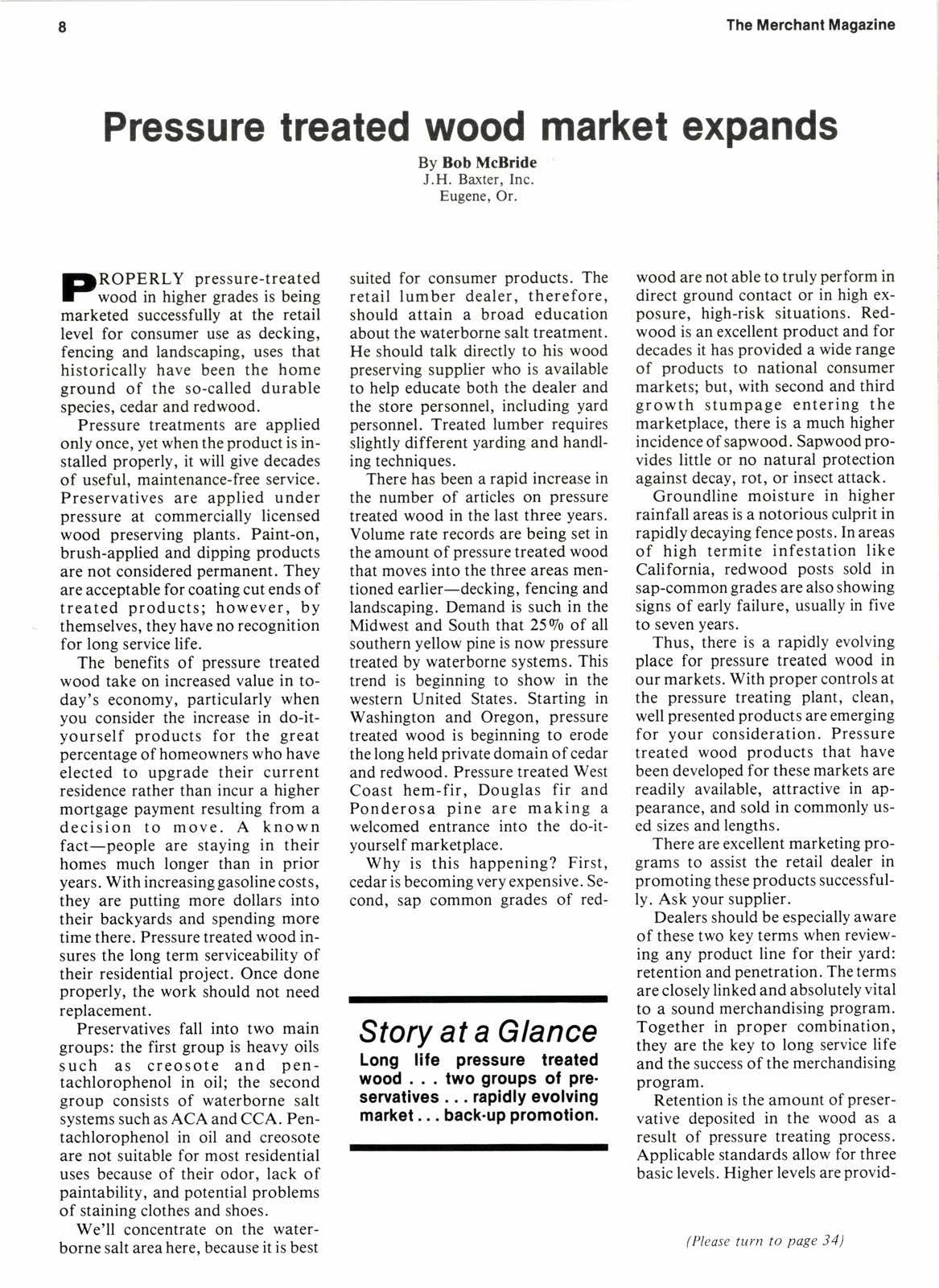
1 minute read
Pressure treated wood market expands
By Bob McBride J.H. Baxter, Inc. Eugene, Or.
EROPERLY pressure-treated
F wood in higher grades is being marketed successfully at the retail level for consumer use as decking, fencing and landscaping, uses that historically have been the home ground of the so-called durable species, cedar and redwood.
Pressure treatments are applied only once, yet when the product is installed properly, it will give decades of useful, maintenance-free service. Preservatives are applied under pressure at commercially licensed wood preserving plants. Paint-on, brush-applied and dipping products are not considered permanent. They are acceptable for coating cut ends of treated products; however, by themselves, they have no recognition for long service life.
The benefits of pressure treated wood take on increased value in today's economy, particularly when you consider the increase in do-ityourself products for the great percentage of homeowners who have elected to upgrade their current residence rather than incur a higher mortgage payment resulting from a decision to move. A known fact-people are staying in their homes much longer than in prior years. With increasing gasoline costs, they are putting more dollars into their backyards and spending more time there. Pressure treated wood insures the long term serviceability of their residential project. Once done properly, the work should not need replacement.
Preservatives fall into two main groups: the first group is heavy oils such as creosote and pentachlorophenol in oil; the second group consists of waterborne salt systems such as ACA and CCA. Pentachlorophenol inoil and creosote are not suitable for most residential uses because of their odor, lack of paintability, and potential problems of staining clothes and shoes.
We'll concentrate on the waterborne salt area here. because it is best suited for consumer products. The retail lumber dealer, therefore, should attain a broad education about the waterborne salt treatment. He should talk directly to his wood preserving supplier who is available to help educate both the dealer and the store personnel, including yard personnel. Treated lumber requires slightly different yarding and handling techniques.
There has been a rapid increase in the number of articles on pressure treated wood in the last three years. Volume rate records are being set in the amount of pressure treated wood that moves into the three areas mentioned earlier-decking, fencing and landscaping. Demand is such in the Midwest and South that 2590 of all southern yellow pine is now pressure treated by waterborne systems. This trend is beginning to show in the western United States. Starting in Washington and Oregon, pressure treated wood is beginning to erode the long held private domain of cedar and redwood. Pressure treated West Coast hem-fir, Douglas fir and Ponderosa pinearemaking a welcomed entrance into the do-ityourself marketplace.
Why is this happening? First, cedar is becoming very expensive. Second, sap common grades of red-









